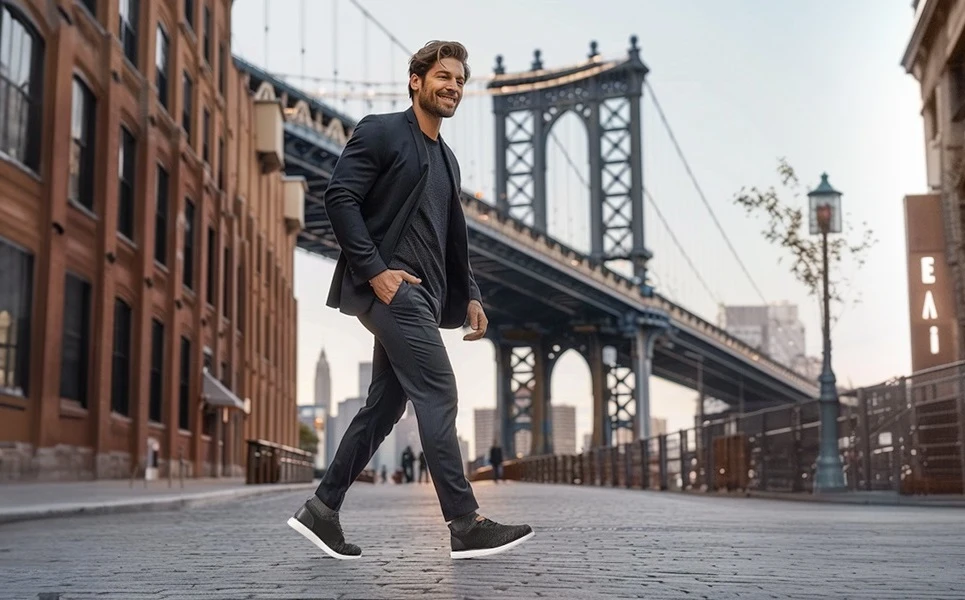It all started with a single pair of sneakers. After a few compliments at work, you began noticing how shoes could elevate not only an outfit but your confidence as well. Fast forward a couple of years, and now your closet boasts everything from sleek loafers and ankle boots to limited-edition sneakers. Each pair tells a story, reflecting different moments in your life, your tastes, and even your personality. But shoe collection isn’t just a hobby for fashion enthusiasts; it’s an art form that blends personal style with functionality.
A well-curated shoe collection offers variety for every occasion—whether you’re heading to a business meeting, a casual outing, or even a red carpet-event. But it also plays into larger trends, such as the growth of sneaker culture and the rising focus on sustainable fashion.
Why Building a Shoe Collection Matters
A Growing Industry
The footwear industry is booming, with the global market projected to reach $530 billion by 2027, according to Fortune Business Insights. Shoes have become more than just accessories—they are statement pieces that define personal style and even social status. A survey by Piper Sandler revealed that 56% of Gen Z consider sneakers an essential part of their wardrobe, reflecting the shift in consumer behavior towards more casual, street-inspired styles.
Sneaker Culture: A Billion-Dollar Market
Sneaker culture has transcended its athletic roots, becoming a symbol of personal expression and even investment. Limited-edition collaborations, from brands like Nike and Adidas, can sell out within minutes, only to be resold at prices up to 300% higher on platforms like StockX. The resale sneaker market alone is expected to hit $30 billion by 2030, showcasing the significant role of shoes in both fashion and investment circles.
Diverse Styles for Different Needs
A thoughtfully built shoe collection offers versatility. You’ll want a mix of formal, casual, and functional shoes to cover every occasion. Business Insider reports that the average person owns 19 pairs of shoes, with women averaging slightly more at 27 pairs compared to men’s 12 pairs. Whether it’s dress shoes for a formal occasion, running shoes for fitness, or boots for winter weather, each pair serves a unique purpose.
Sustainability in Shoe Fashion
With environmental consciousness rising, sustainability is a growing trend in the shoe market. Brands like Allbirds and Rothy’s are championing eco-friendly footwear, using recycled materials and ethical production processes. According to a Statista report, 48% of consumers now say they consider sustainability when purchasing new shoes, with an increasing number opting for brands that emphasize eco-conscious production. This trend is reshaping the future of footwear, encouraging collectors to invest in shoes that not only look good but do good for the planet.
Key Factors for Building a Shoe Collection
Comfort Meets Style
As much as style matters, comfort is king when it comes to shoes. It’s essential to invest in pairs that offer both aesthetic appeal and the right support. According to The American Podiatric Medical Association, 87% of Americans experience foot pain from wearing poorly fitting shoes, underlining the importance of choosing footwear that supports foot health.
Quality Over Quantity
While it might be tempting to purchase multiple pairs of trendy shoes, focusing on quality is a more sustainable and cost-effective approach. High-quality materials like leather, suede, and sustainably sourced fabrics will last longer, offering better value over time. A study by Forbes notes that 61% of consumers are willing to pay more for shoes that last longer and maintain their shape.
Invest in Timeless Pieces
Certain styles never go out of fashion, making them essential for any shoe collection. Classic black pumps, white sneakers, and brown leather boots are versatile pieces that can be paired with various outfits year-round. Investing in timeless designs allows you to maintain a collection that remains stylish over time, regardless of fleeting fashion trends.
Rotating for Longevity
Rotating your shoes helps to extend their lifespan. Constantly wearing the same pair can lead to quicker wear and tear. It’s recommended to give shoes a break between wears to allow the material to recover and maintain shape. This is particularly important for leather footwear, which can deteriorate more quickly without proper care.
Shoe Collections as Investments
As sneakers have emerged as highly sought-after fashion items, many collectors now view certain shoes as valuable assets. Rare and limited-edition sneakers can be appreciated, especially those released in collaboration with celebrities or designers. For instance, Nike’s Air Jordan 1 Retro High OG had a retail price of $160 but now resells for over $1,500 depending on condition and rarity. Such examples make shoes a viable investment option for those looking to combine passion with profit.
Conclusion: Your Shoe Collection is More than Footwear
A well-rounded shoe collection is more than just a set of practical items—it’s a reflection of personal style, a conversation starter, and sometimes even an investment. Whether you’re just starting out or already have a walk-in closet full of footwear, every pair plays a role in telling your story. By focusing on quality, sustainability, and versatility, you can build a collection that not only meets your fashion needs but also stands the test of time.

